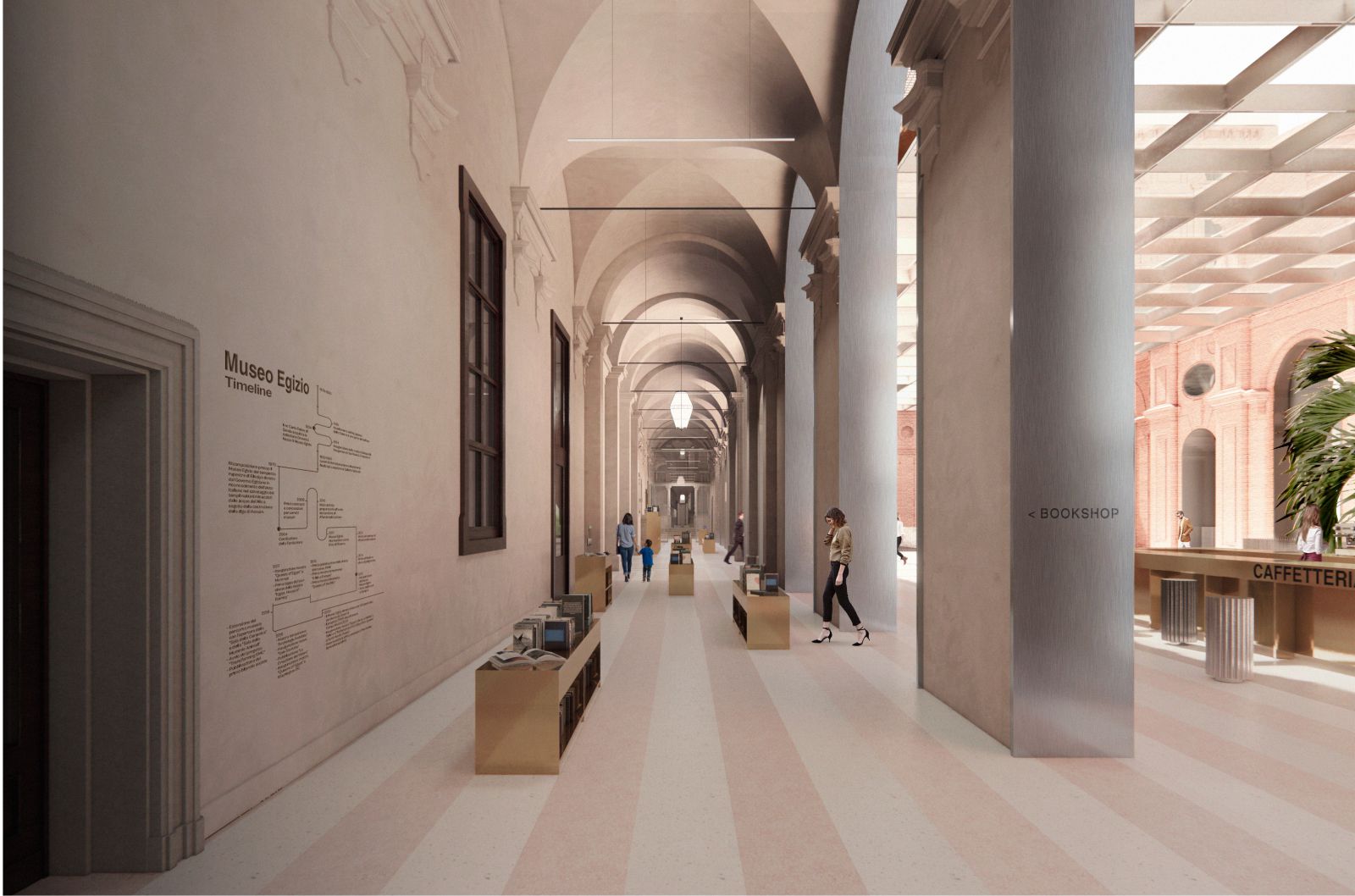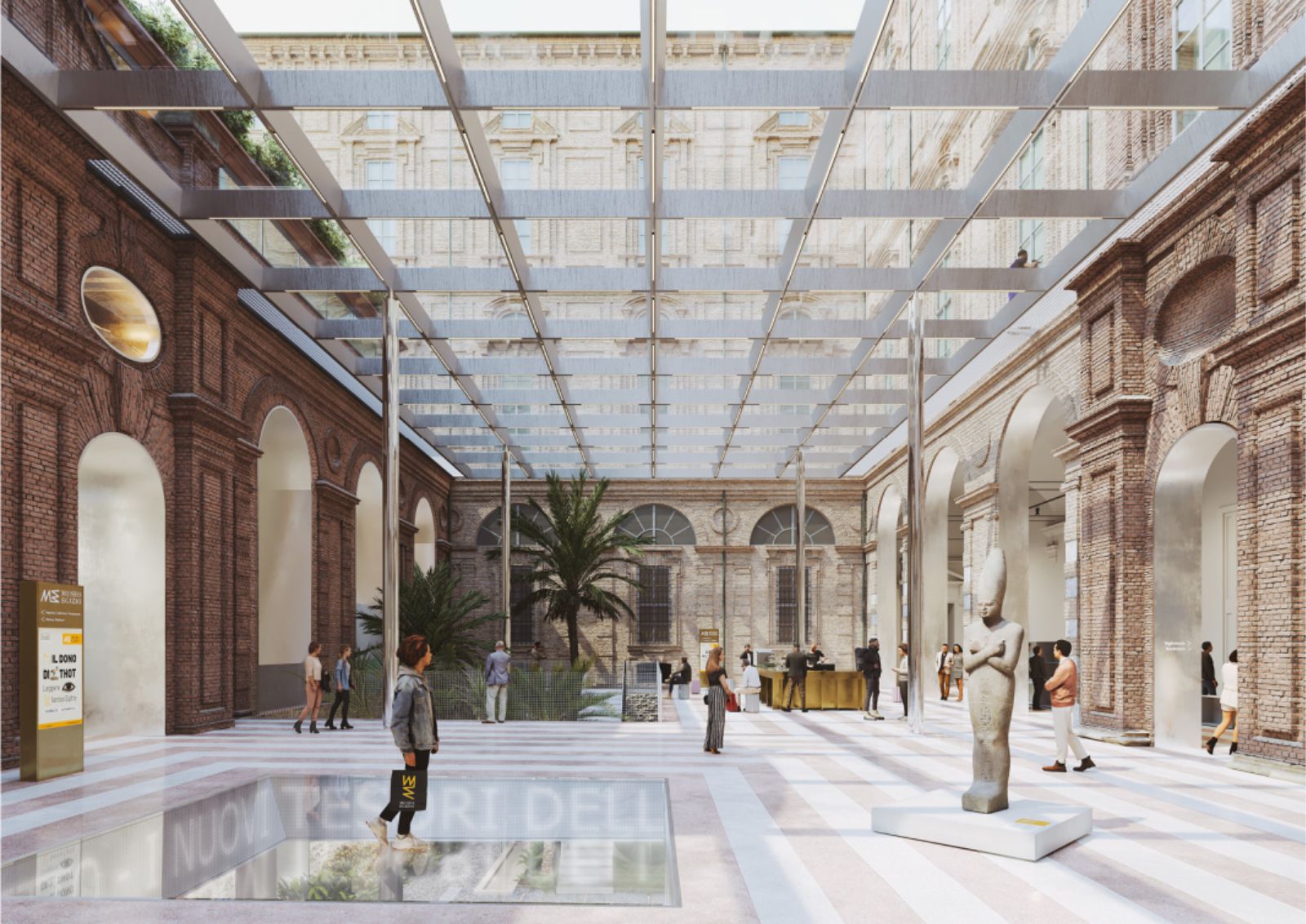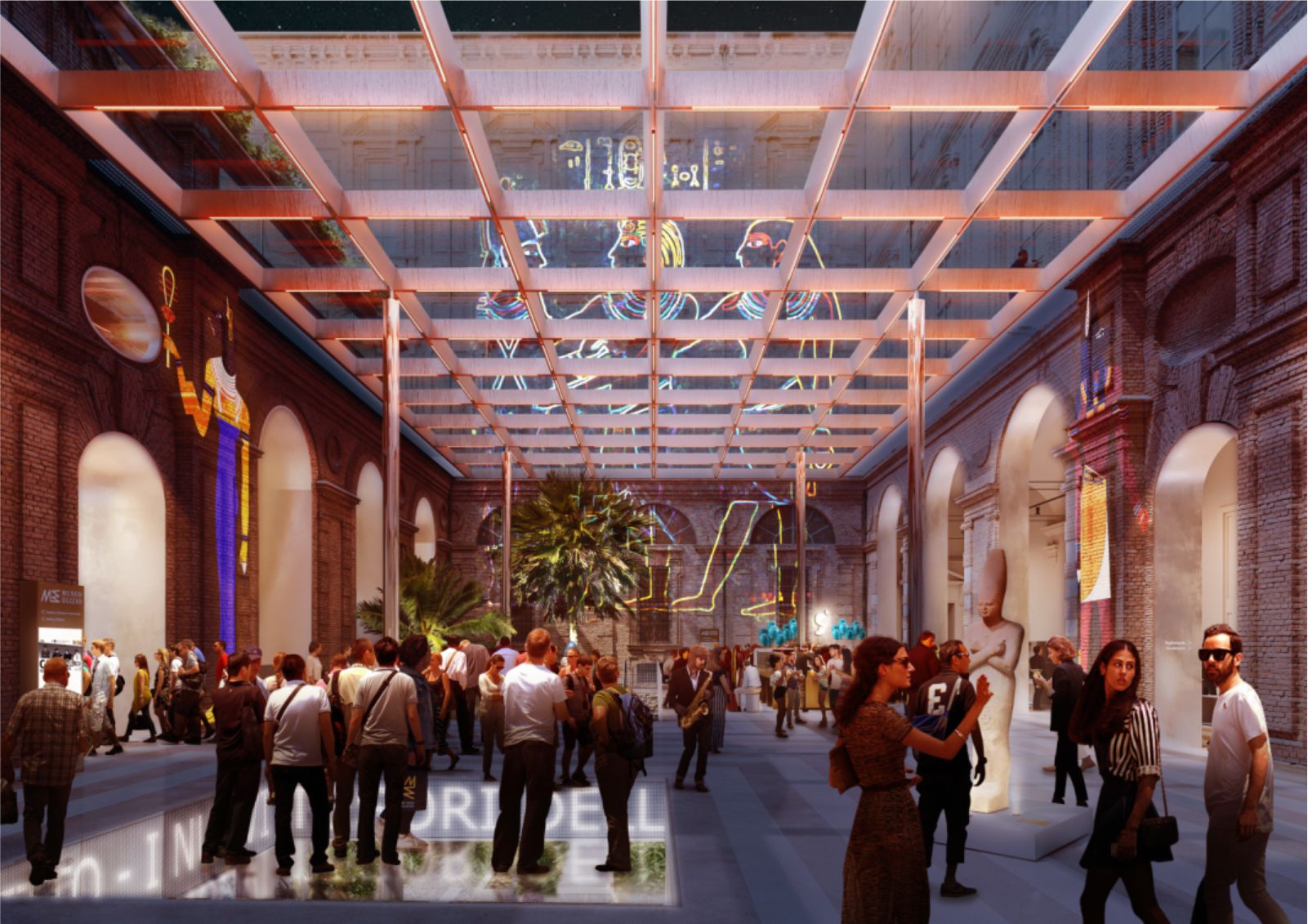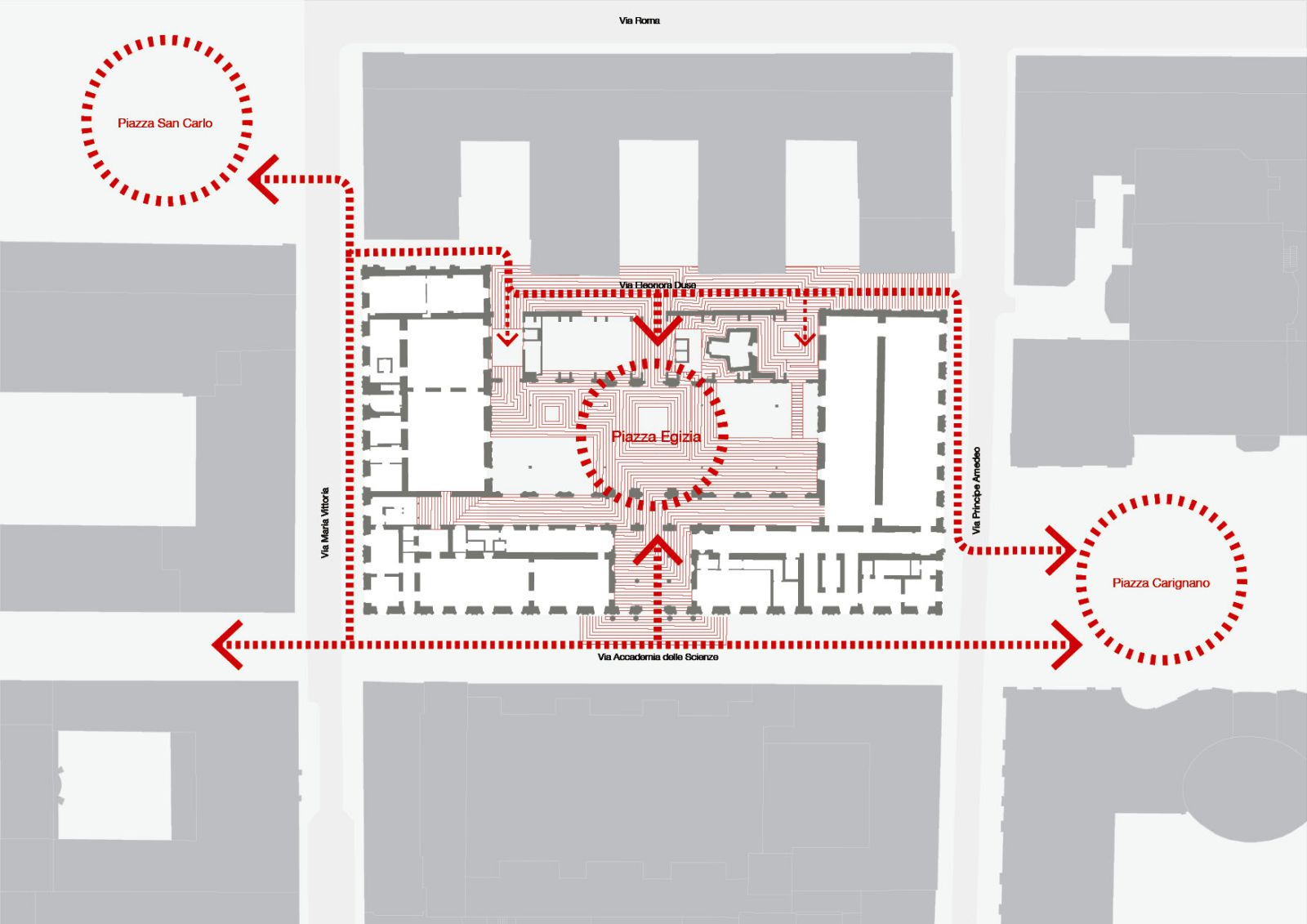OMA / David Gianotten and Andreas Karavanas have won the competition to transform Museo Egizio in Turin, the world’s oldest museum for the ancient Egyptian culture.
The design creates a new covered courtyard known as Piazza Egizia and a series of connected urban rooms within the existing museum, opening the cultural space to all.

Museo Egizio founded in 1824 is housed in Collegio dei Nobili – a complex consisting of exhibition galleries, the Academy of Sciences, and an open courtyard. Changing requirements over the past two centuries have led to numerous alterations to the museum’s architecture, closing the public areas off to the rest of the city.
The design is defined by six distinctive urban rooms, each with its unique scale, function, and quality. The largest urban room central to the museum is the Piazza Egizia.

A central Spine connects the six urban rooms together, and also to both of the museum’s entrances on Via Accademia and Via Duse. New openings have been introduced to the current façade along Via Duse, further drawing the public into the museum and the Piazza Egizia.
The six urban rooms share a ground floor pattern – inspired by the museum’s artefacts – for visual continuity. The Piazza Egizia is a double-level, multifunctional courtyard that showcases the museum’s original architecture and traces of interventions over time.

The multiple historic openings of the courtyard at level 0 – which had been closed due to the museum’s alterations – are once again opened, connecting the public space back to the city.
At level -1 are the Egyptian Garden and the event and learning space. Here, Collegio dei Nobili’s original façade concealed since the 2010 renovation is uncovered. Above the courtyard is a transparent canopy.

Its aluminum cladded steel structural grid is a device for rainwater collection, air ventilation, and lighting provision, answering the museum’s ambitions for sustainability.
The Piazza Egizia and other urban rooms are open beyond working hours for visitors with or without tickets. Their public nature offers possibilities for the museum to extend its opening hours. A selection of Museo Egizio’s artefacts is on display for the general public’s initial encounters with the museum collection.

The competition design was led by OMA’s David Gianotten and Andreas Karavanas, in collaboration with local architects Andrea Tabocchini Architecture, T-Studio, and historical consultant Professor Andrea Longhi.
OMA’s design was selected among competition entries by Kengo Kuma and Associates, Pininfarina Architecture, Carlo Ratti Associati, and Snøhetta. Source by OMA.

- Location: Turin, Italy
- Architect: OMA
- Partner: David Gianotten
- Project Leader: Andreas Karavanas
- Design Team: Rui Pedro Couto Fernandes, Giovanni Nembrini
- Local Architect: Andrea Tabocchini Architecture (Andrea Tabocchini and Francesca Vittorini); T-Studio
- Historical Consultant: Professor Andrea Longhi
- Conservation and Restoration: Studio Strati
- Structural Engineer: Manfroni Engineering Workshop
- MEP and Sustainability: Sequas
- Lighting: Studio De Camillis – Fibbi
- Client: Fondazione Compagnia di San Paolo, in collaboration with Fondazione Museo delle Antichità Egizie di Torino (Museum of Egyptian Antiquities Foundation, Turin) and Fondazione per l’architettura / Torino (Architecture Foundation, Turin)
- Year: 2023
- Images: Courtesy of OMA










